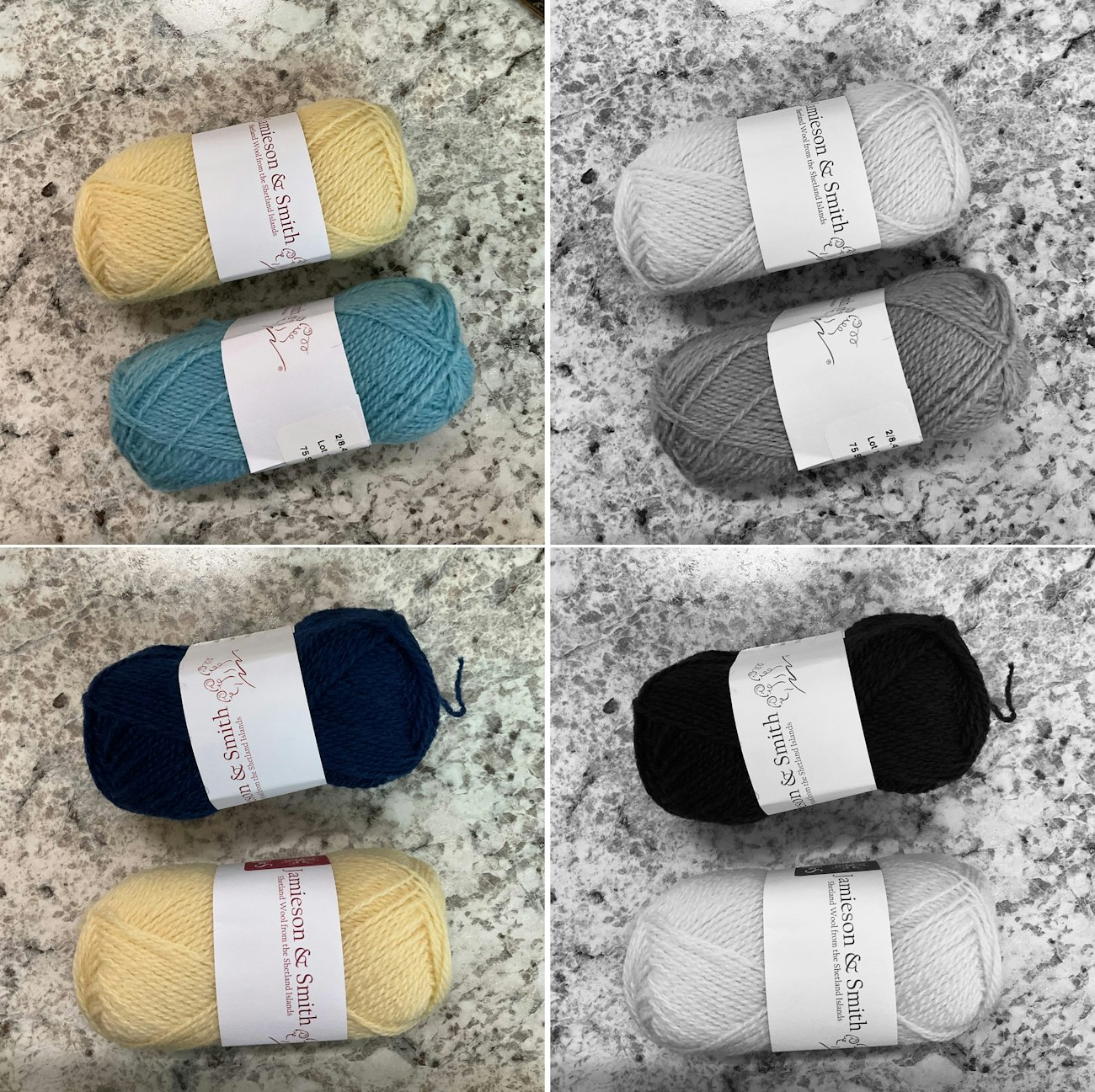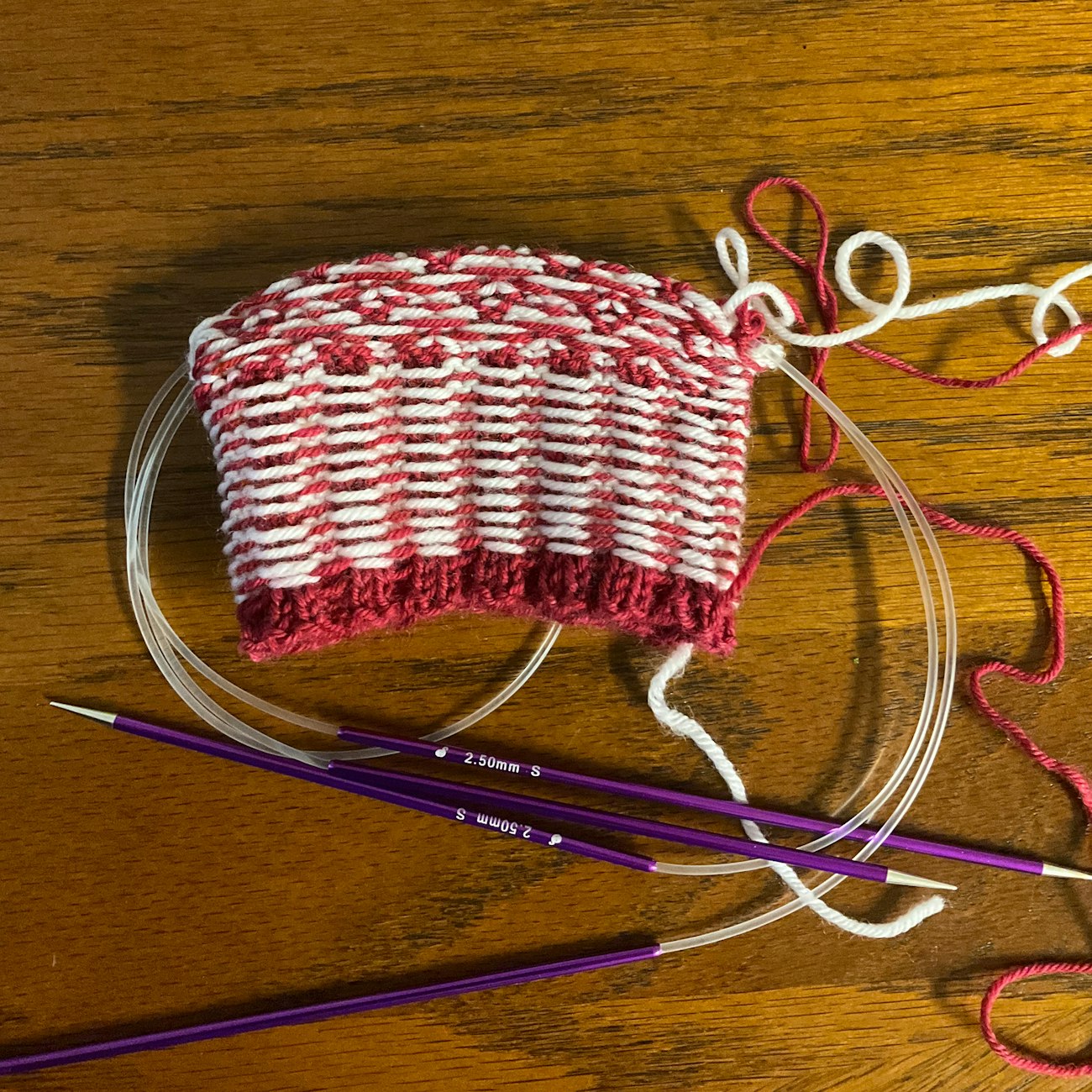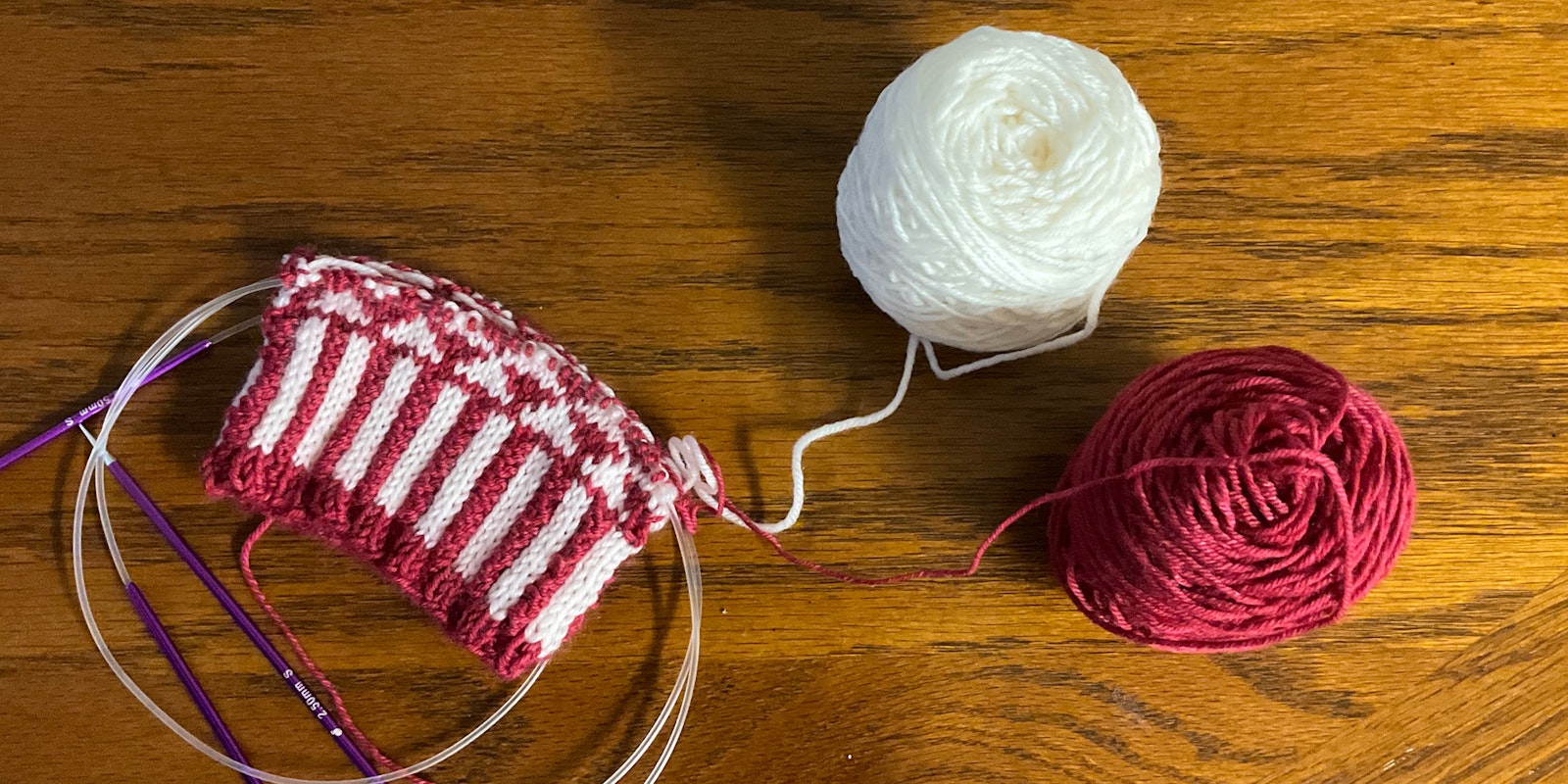Fair Isle-style stranded colorwork is knitted in the round, working with two different colors to create various motifs in a design. I have seen it used to wonderful effect in projects ranging from mittens and socks to sweaters with fabulous yokes. Here are some of the things I have learned to make the technique more enjoyable and improve the look of the finished product.
Color and Contrast
Color selection is one of the most important considerations with colorwork. How can you find the right balance between colors to create the desired effect? Luckily, most of us carry phones in our pockets that can help with this. Have you ever been to a yarn shop and had a hard time deciding which skeins will give you the most pop for that design? Take a picture of the skeins together and change it to black-and-white. Do the skeins look like the same shade of gray, or is there a high amount of contrast? The skeins with the greater contrast will work better together to make the motif pop.
 Skeins shown in color and grayscale. Which pair do you think will pop more in a motif?
Skeins shown in color and grayscale. Which pair do you think will pop more in a motif?
Relax
You’re comfortable with holding one yarn, and now you have two? And there are floats—not the ice cream and soda kind, but extra yarn on the backside of the project. Pull too tight and the project puckers; leave it loose and risk snagging and pulling the stitches. How do you maintain balance? One method is to knit with one color in each hand, using the style you normally knit with to work the main color and your other hand to work the contrast color. (The yarn in one hand will look bolder than the other, a phenomenon called “color dominance,” so don’t change hands.)
There is also nothing that says you must knit on the outside of the circle your needles make. Flipping the knit side to the inside of the circle and letting the floats travel on the outside of the knitting will also help with tension.
 Working with the knitting to the inside makes you more aware of the floats and has the same effect as traveling a race track: cars and floats on the outside have to travel more distance than those at the center.
Working with the knitting to the inside makes you more aware of the floats and has the same effect as traveling a race track: cars and floats on the outside have to travel more distance than those at the center.
Charts
Just as with lace, stranded colorwork patterns use charts. Since this technique is knitted in the round, instead of reading back and forth as rows, charts are read from right to left for each round. They can either be in color, use symbols in black and white, or combine both. If you are not knitting your pattern in the same colors as shown, create yourself a key to remind you which yarn color matches your chart. And don’t forget to read your knitting. You can avoid many mistakes by paying attention to both the round being worked and the one before. Does this stitch match the stitch below, or is it the opposite color? Luckily, if you do use the wrong color, both strands are there to make an easy swap.
Hopefully these suggestions will help you out with your next colorwork project. I have yet to tackle the scariest one of all: steeks! Maybe that will be one of my knitting goals this year.
Katrina King is the assistant editor of PieceWork, an avid crafter, and continuing student of life.

